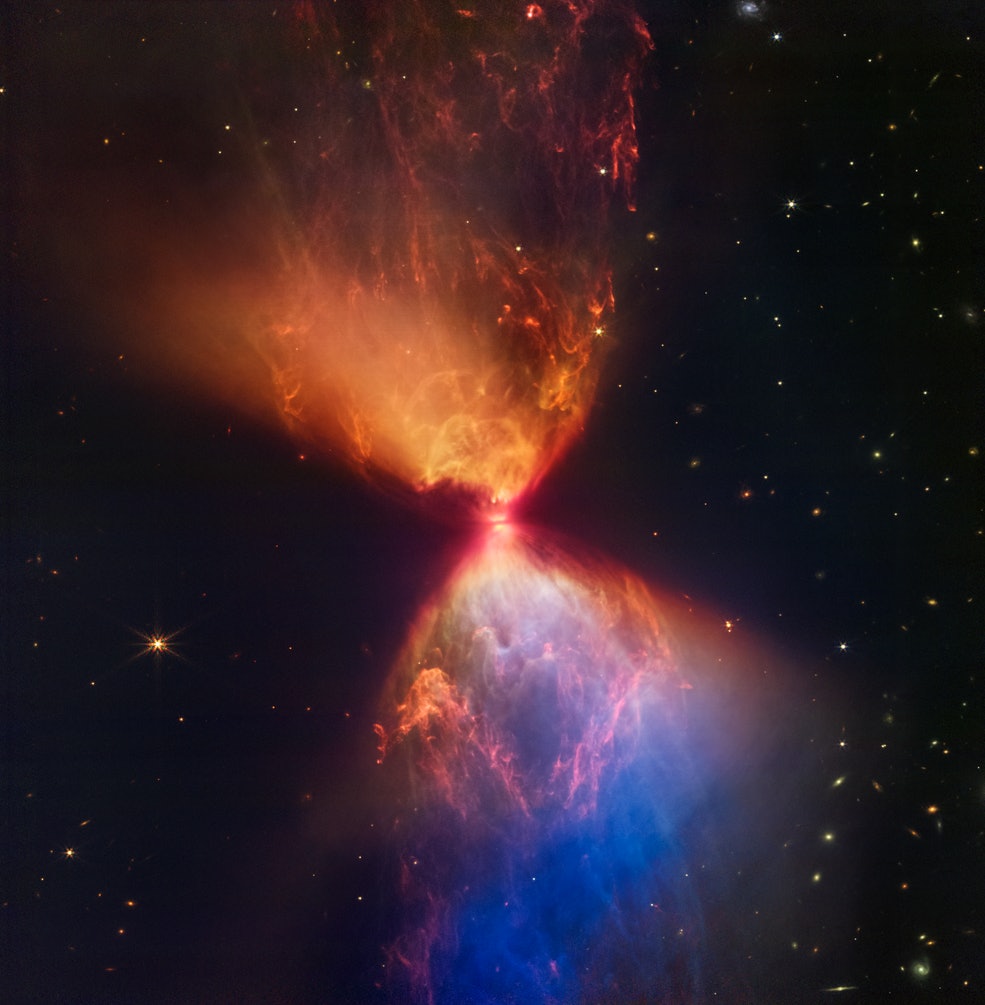
On December 25, 2021, the James Webb Space Telescope (JWST) launched toward its new home about a million miles from Earth. After months of instrument calibration, flight time, and testing, the world beheld its first science images one year ago today. On JWST’s first anniversary, we look back on the best images the telescope produced in its debut year.
When NASA, the European Space Agency, and the Canadian Space Agency released the first glimmers of what their next-generation telescope was capable of, astronomers and the general public got a deeper look into the wonders of the universe.
From the corners of the Solar System to the farthest-seen reaches of space, JWST has stared into a broad spectrum of worlds. Here are some of the highlights over the last year.
The Early Universe
Light pours forth from the deepest recesses of the universe and snags onto the four instruments housed within JWST. Much of this light hasn’t been seen before by human eyes. Last year’s observations revealed contours to faraway galaxies that previously looked like blurry dots. Those that already had a bit of shape to them are coming into sharper focus, now that they have met an instrument sensitive enough to notice their faint beacons from across the universe.
1. A glance at the PEARLS field
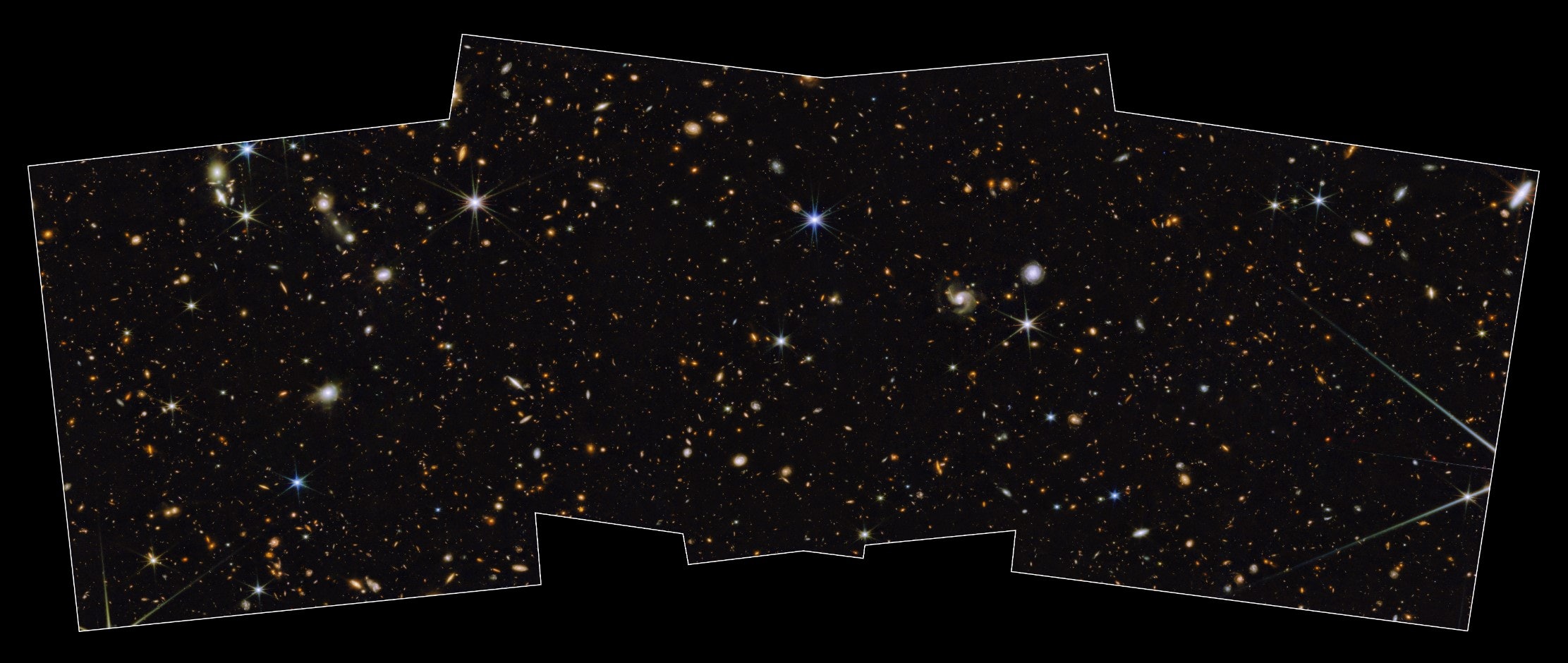
This Prime Extragalactic Areas for Reionization and Lensing Science (PEARLS) survey image brims with thousands of galaxies. The farthest are from roughly 13.5 billion years ago, just slightly younger than the age of the universe. Some have never been seen before, while others emerge clearer than ever before with “streams, tails, shells, and halos of stars” in their outskirts. PEARLS looked at the constellation Draco in August and September 2022.
2. The JADES field
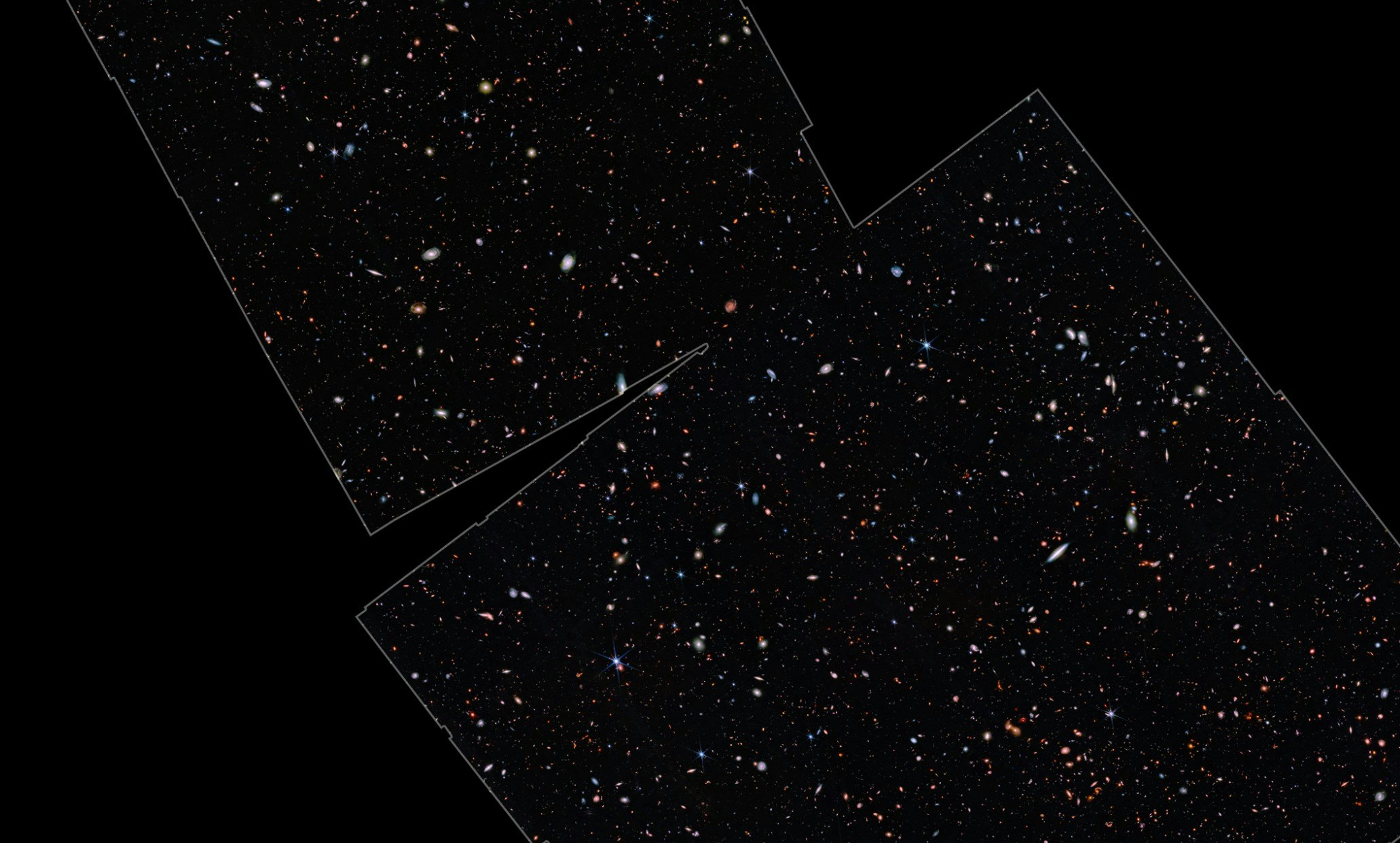
The JWST Advanced Deep Extragalactic Survey (JADES) program not only viewed galaxies from just 350 million years after the Big Bang, but it also collected data about what elements might be inside them. For the team involved in the work, the sight of these ancient galaxies in JWST’s stunning imagery was a “special experience.”
Rings and Exoplanets
When JWST glimpses other stars and the ensemble of objects orbiting them, astronomers get an idea about the universe to which the Sun and the Earth were born. JWST is capable of rendering extraordinary details about relatively obscure celestial bodies that emit no light themselves. So far, the telescope has gleaned data from some of the atmospheres, and has even confirmed rings, around these extrasolar worlds.
3. Chariklo

Chariklo is a small icy body that, like the planet Saturn, has rings. JWST helped confirm the existence of the rings when it saw the blinks created when Chariklo and its rings passed in front of a star. Although Chariklo is more than 2 billion miles away from Saturn, JWST’s observations may possibly be a trove of information on fine details about the rings, like their thicknesses and the color of their particles. JWST studied Chariklo in October 2022.
4. Fomalhaut
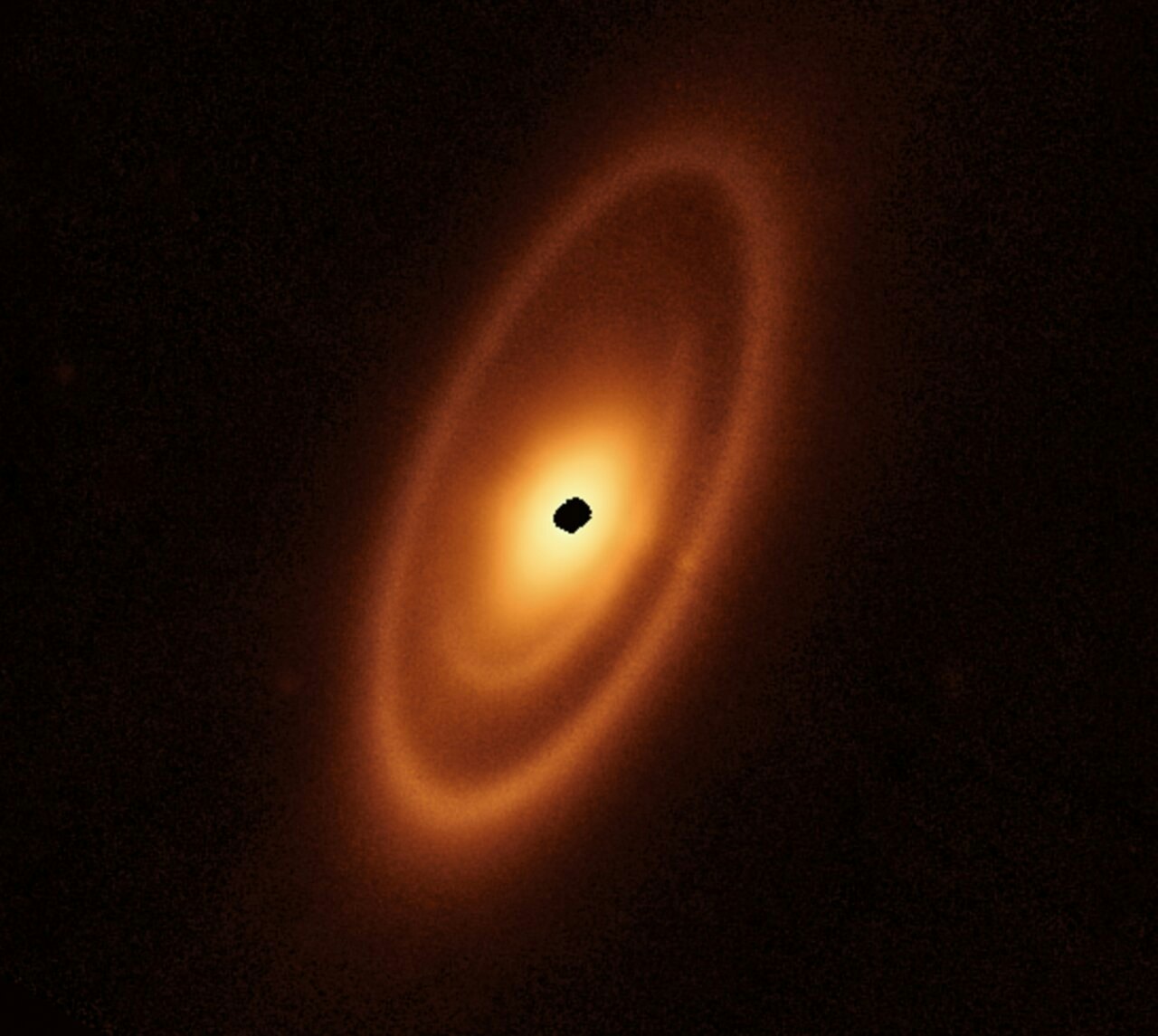
When the Hubble Space Telescope had gazed at nearby Fomalhaut, this young star and its pre-planetary disk of material looked like an oval haze. New JWST imagery shows a more in-depth picture. Fomalhaut’s two inner rings are visible for the first time, with clear divisions possibly being the place where exoplanets are carving out the cloud. A third ring, located at the disk’s outermost edge, may be a scene where two icy young planets are slamming into each other, and creating what JWST sees as a halo.
Nebulas
Nebulas are places where the remnants of stellar deaths come back together to form a new generation of stars. Their processes are critical to understanding how the most basic units of our universe are born. JWST’s sensitivity also makes for stunning images of these already eye-catching places.
5. Pillars of Creation
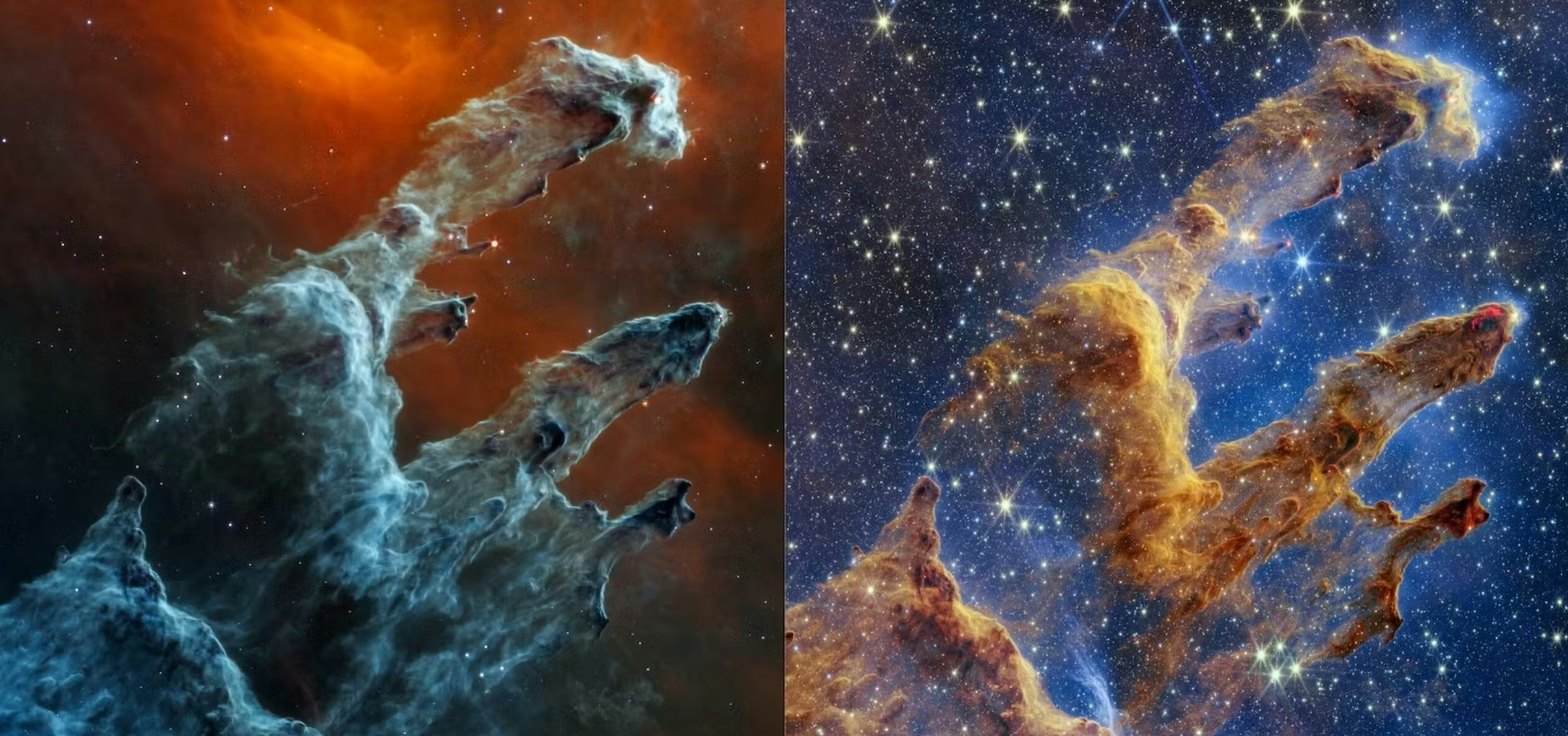
The Pillars of Creation appear “in their full glory” as JWST’s Mid-Infrared Instrument narrowed in on the columns of dust and gas that lend their majesty to this object’s name. The Pillars of Creation are a portion of the Eagle Nebula, a stellar nursery located 6,500 light-years away. Astronomers can use this imagery to better understand how the young stars form in this region.
6. A protoplanetary disk in the Orion Nebula
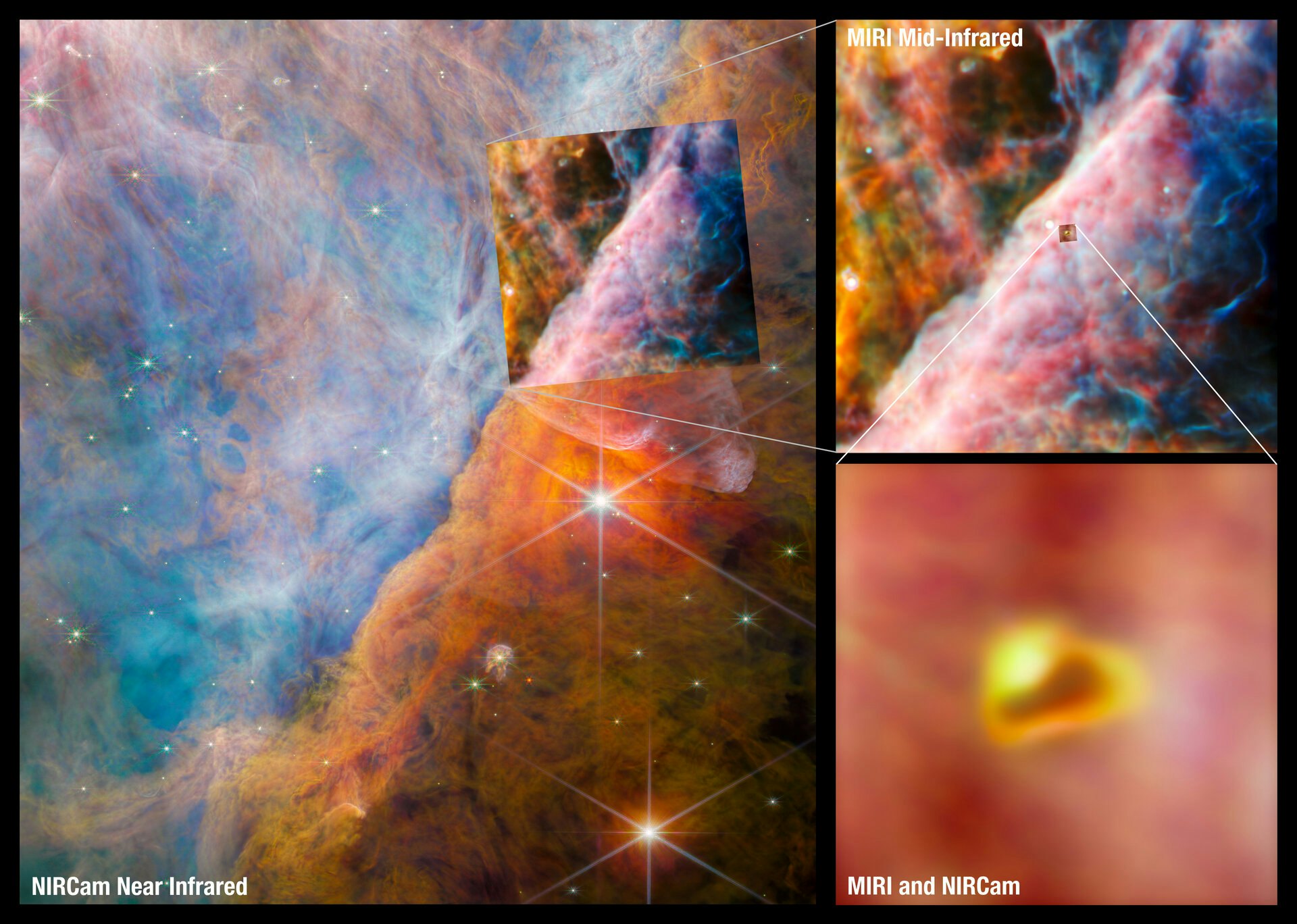
In another nebula closer to Earth, about 1,350 light-years away, there lies the Orion Nebula. In the protoplanetary disk around a young star, JWST discovered a special molecule associated with the formation of life’s building blocks. The observations also produced some of JWST’s most beautiful imagery.
The Outer Solar System
JWST has peered into the far reaches of the Solar System. Neptune and Uranus appear with a clarity that hasn’t been seen since the Voyager missions decades ago. In the case of Jupiter and Saturn, JWST has offered a grand perspective from its near-Earth perch.
7. Jupiter, Saturn, Uranus and Neptune
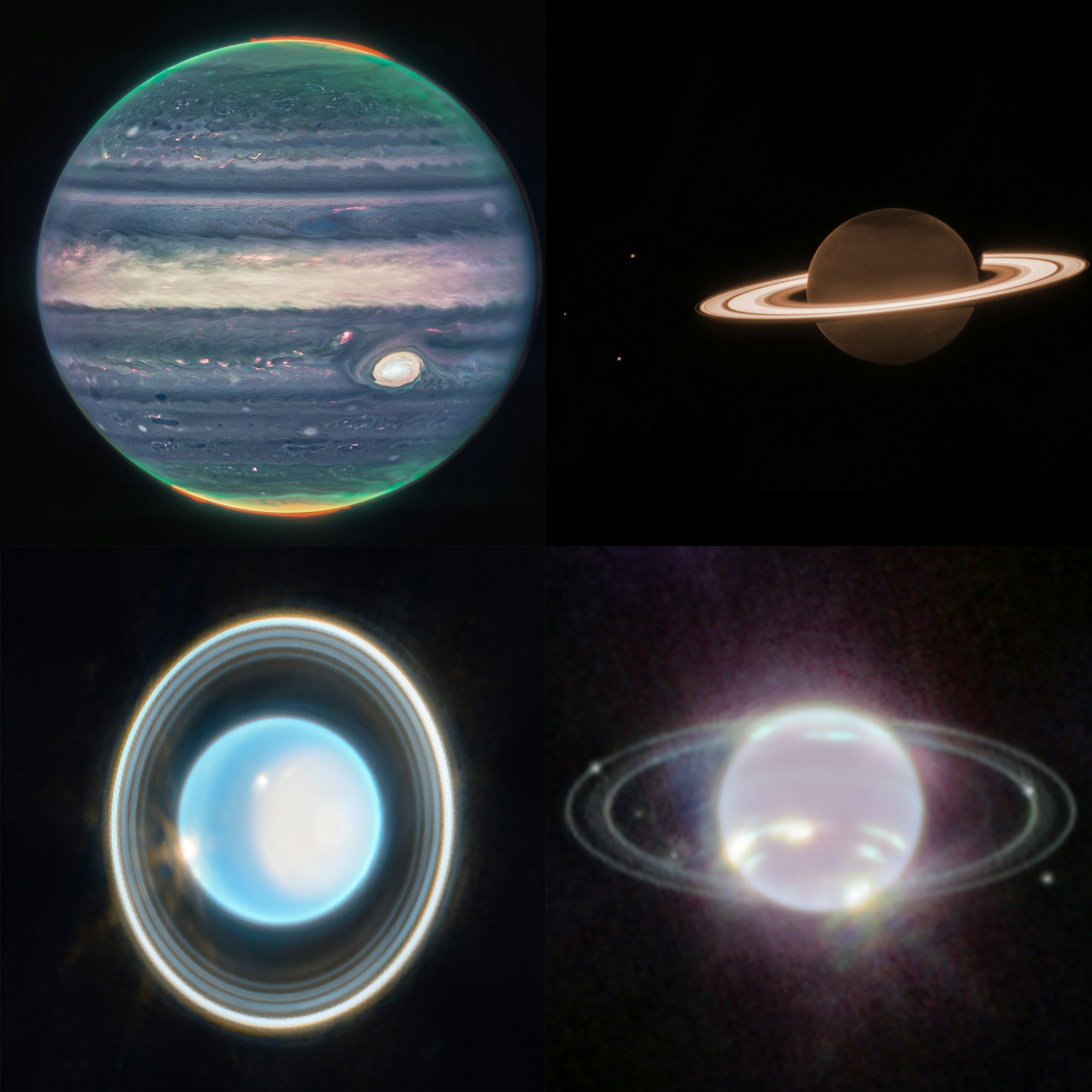
An almost surreal look at Saturn (top right) has already excited astronomers who would like to discover new, faint rings around the dazzling planet. The absorption of light that JWST notices across this global view could also tell astronomers something about how seasons play out on Saturn. JWST gazed at Saturn in June 2023.
JWST observations of Neptune (bottom right) offer a muted color alternative to the bright blue seen through visible light. Astronomers have gained their best look at Neptune since Voyager 2 flew past the distant giant in 1989. The infrared wavelengths that JWST is designed to soak up could reveal, in Neptune’s case, a deeper understanding about its stormy weather. JWST took this picture of Neptune in July 2022.
When JWST got a spectacular view of Uranus (bottom left), six of its 27 moons also came into view. One of the most vivid elements of the imagery are Uranus’ rings, which are fully visible because the planet rotates on its side, almost like a bowling ball. Out of 13 rings, 11 of them are visible in the JWST image taken in February 2023.
Jupiter (top left) and its relatively-unknown moon Amalthea made a splash in JWST imagery. The poles of the giant planet are coated with a localized glow: these are actually auroras as they appear in infrared light.
8. Enceladus
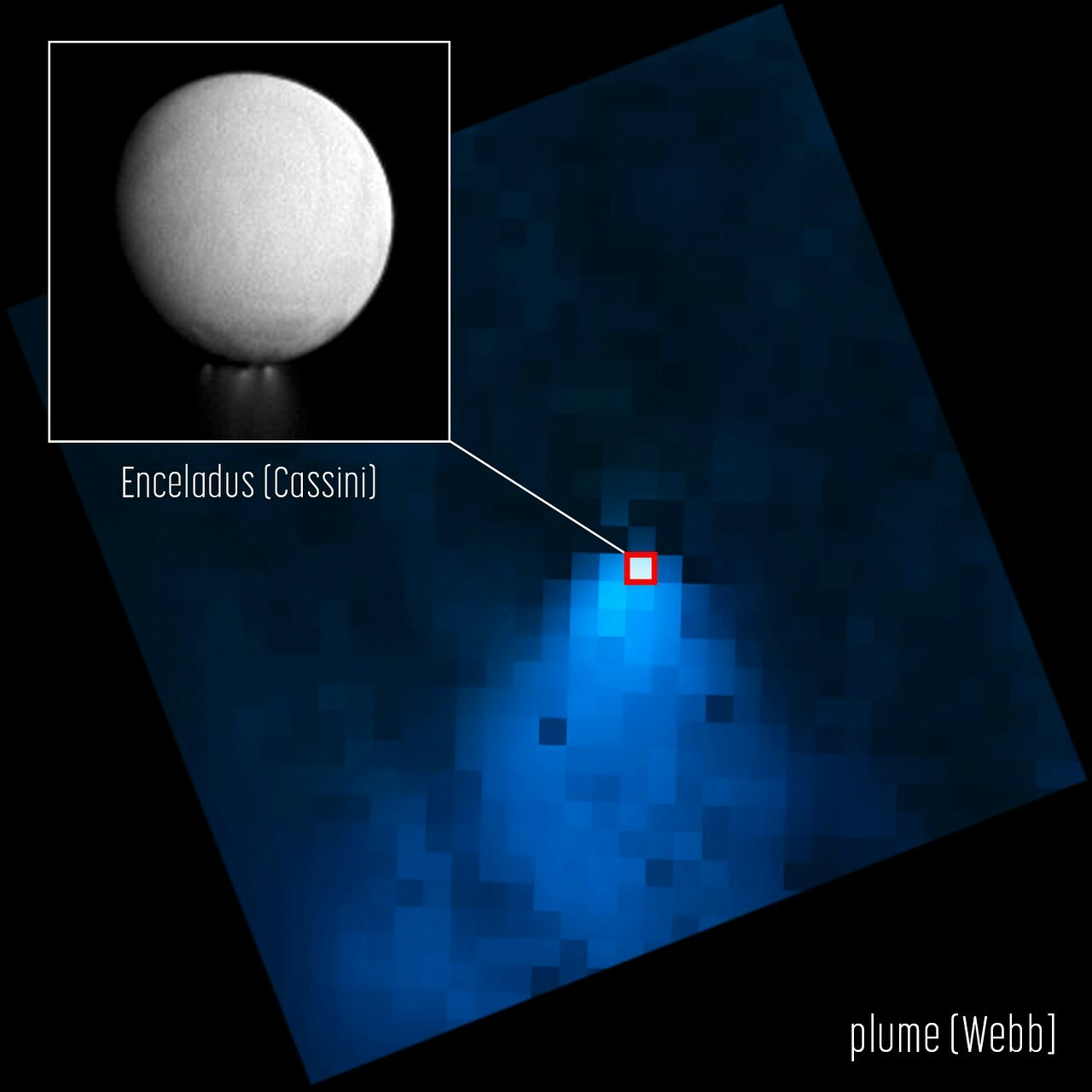
The Cassini mission discovered last decade that Saturn’s moon Enceladus has geysers. This hints at a deep ocean below the tiny moon, potentially capable of sustaining life. From its distant vantage point, JWST noticed a particularly massive plume erupting from its surface, capable of lifting icy particles off the moon into the rest of the Saturn system.
Stellar formation
9. Phantom Galaxy
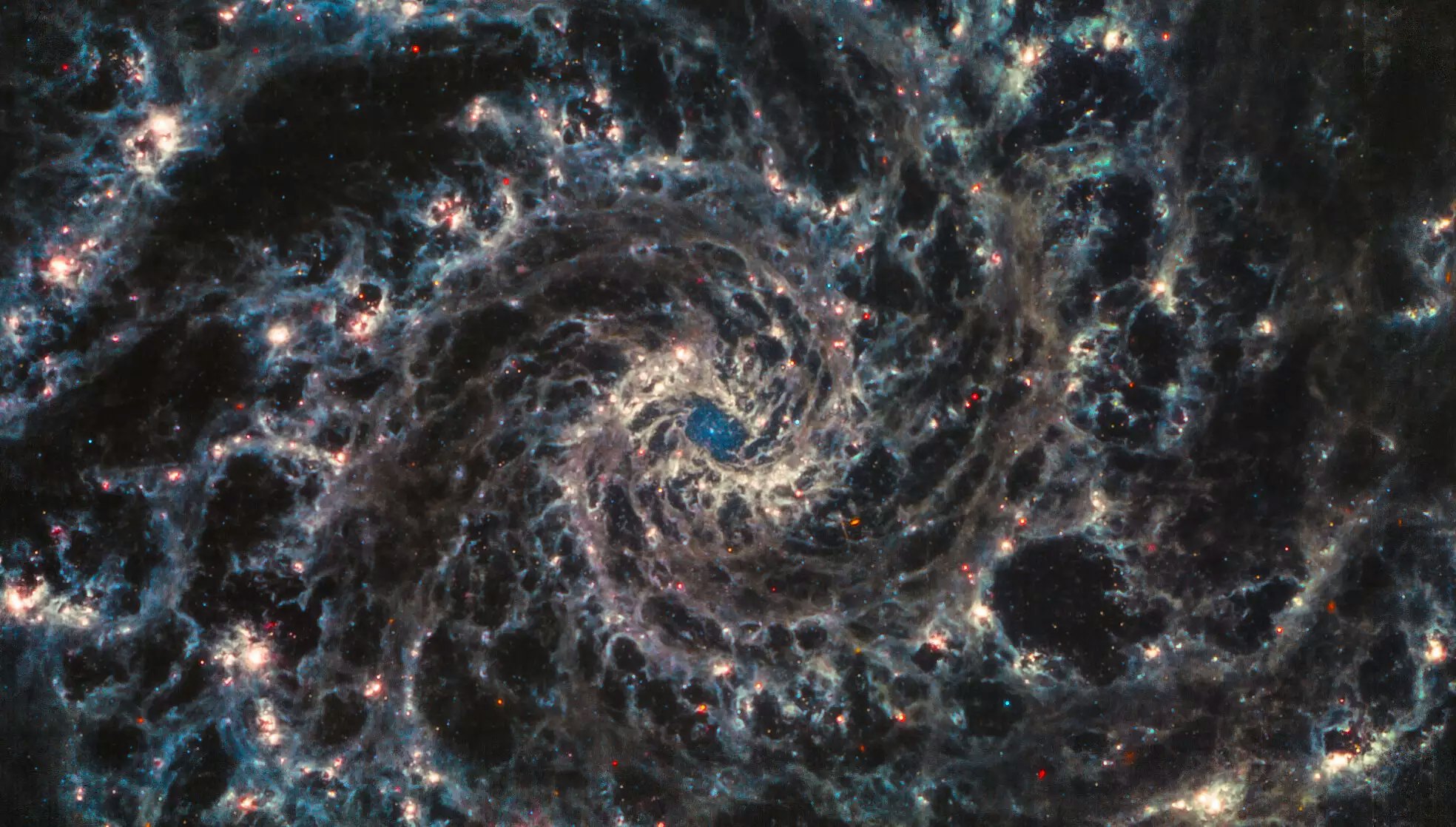
Thanks to JWST’s observations of spiral galaxies like NGC 628, astronomers can follow the channels and lanes of star-making dust and gas. JWST’s infrared data reveals the interplay between phenomena at both big and small scales, and offers a way to understand how local starbursts are related to a galaxy’s grand overall structure. NGC 628 is also known as the Phantom Galaxy or Messier 74, and it’s located relatively nearby at just 32 million light-years away.
10. Protostar L1527
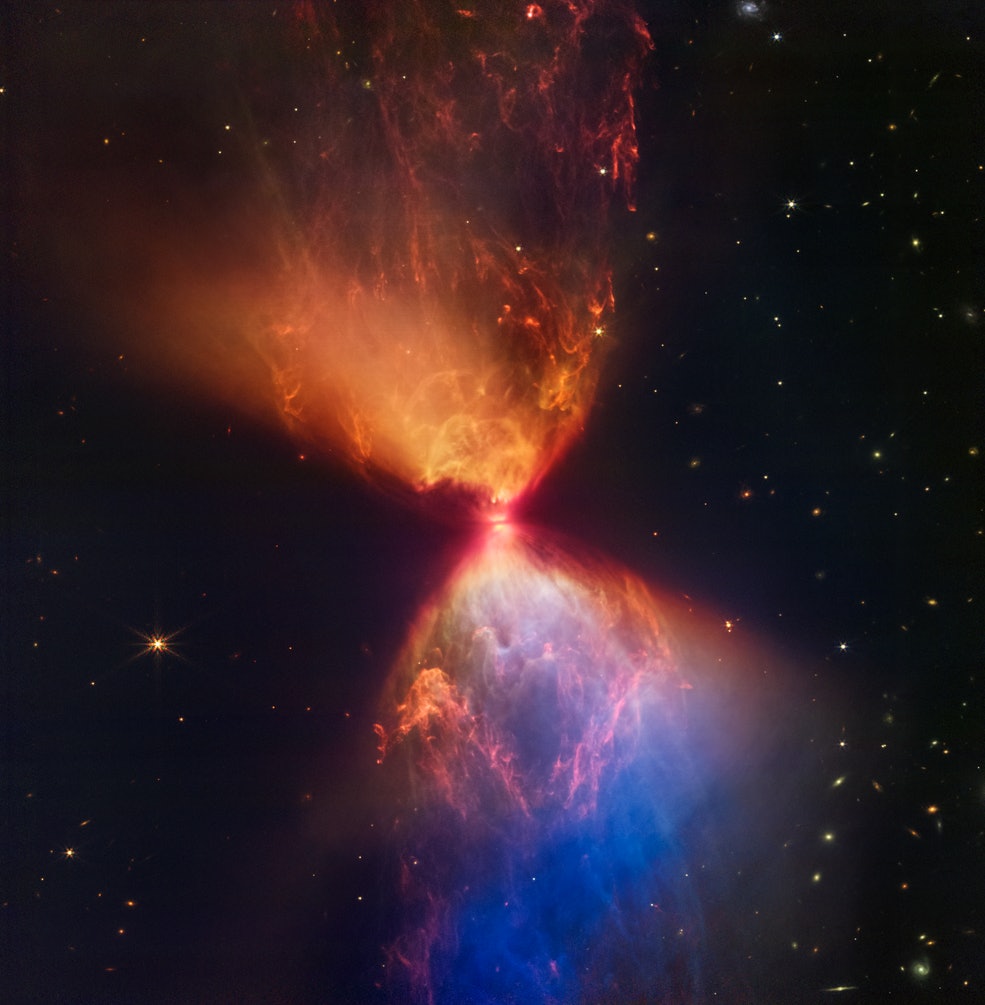
JWST looked at an object not yet a star, which might resemble what the Sun looked like billions of years ago. The bright point at the center of this JWST image, protostar L1527, is only 100,000 years old, and much too young to have kickstarted the nuclear fusion quintessential to stars. The hourglass shape is created as the protostar and its protoplanetary disk emanate heat out into the shroud of material that swaddles it.
Planetary Defense
11. Dimorphos
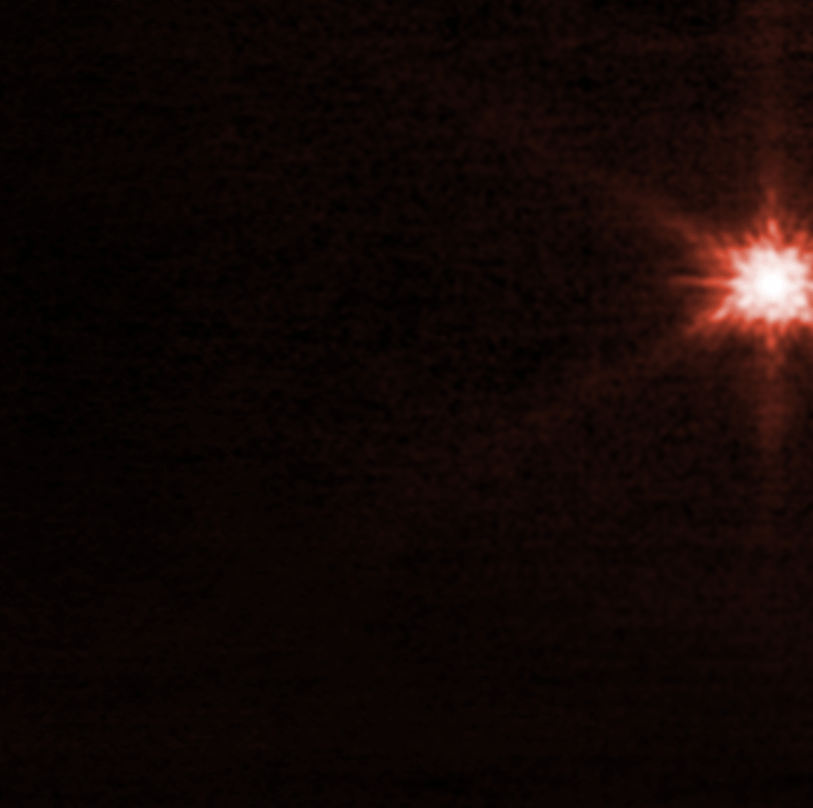
JWST caught the moment that NASA successfully slammed its Double Asteroid Redirection Test (DART) spacecraft into the asteroid Dimorphos, a moon of the near-Earth asteroid Didymos. This animation begins with JWST footage just before the impact through five hours after the strike. JWST captured plumes of material lofted into space away from the impact site. DART and the JWST footage took place in September 2022.
There is much more that JWST captured of our cosmic home in the last year. The slate of upcoming targets is a promising sign that the best images are still to come.







